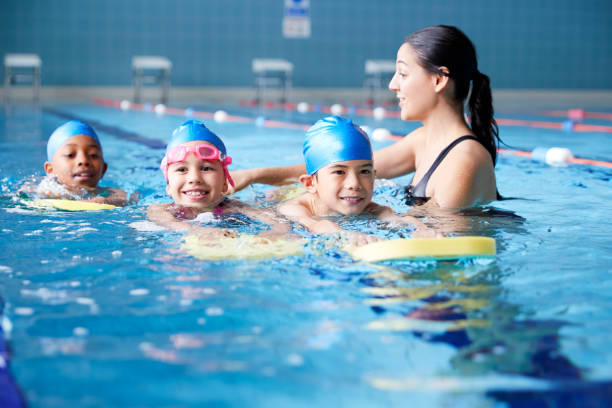Practiced by people of all ages for leisure or competition, swimming attracts a large public and is a very popular activity in terms of health. In the continuity of previous articles dealing with the benefits of aquatic activities, an analysis of sports swimming was essential with Lifeguard Class. The purpose of this article is to present the cardio-respiratory benefits of swimming in the context of primary prevention (before a disease sets in).
Some reminders
Regular physical and sports activity is a health factor both in terms of preventing major diseases, maintaining or even improving health capital and managing most chronic diseases. The practice of regular physical activity (regardless of smoking and nutrition) notably makes it possible to avoid 30% of cardiovascular diseases (myocardial infarction and cerebrovascular accident) (1).
In addition, cardio respiratory capacity is recognized today as a powerful and independent predictor of mortality. Any gain in cardio-respiratory capacity of 1 MET (the MET is a unit of measurement of the energy consumed. 1 MET corresponds to the energy consumed by the body at rest while awake) is accompanied by a 12% reduction in mortality whether the subjects are free of any cardiovascular pathology or are carriers of a chronic pathology (cardiovascular, metabolic or respiratory) (Myers ET AL. 2002), regardless of their age (60-65 years, >70 years) (Kookiness ET AL 2010) (1).
The fact that sports swimming contributes significantly to the development of cardio respiratory capacities is no longer to be demonstrated. However, the constraints inherent in the aquatic environment induce specific bodily adaptations.
Specificity of practice in an aquatic environment: cardiovascular demands
Provided that the technique is mastered, swimming is an activity with a high demand for VO2 max (greater than 75% of VO2 max). On the other hand, the dynamic constraints are moderate (predominant effects on the frequency and the cardiac volumes and on the pulmonary arterial pressures) and the static constraints equivalent to 10 to 20% of the maximum force of the practitioner (predominant effects on the systemic arterial pressures)
Cardio respiratory fitness, also called aerobic endurance, is the ability to maintain prolonged, continuous or intermittent exercise.
Exercises that develop cardio-respiratory fitness are activities associated with movements of body segments that mobilize a large muscle mass, and which must be maintained over long periods of time. Swimming, which mobilizes a large number of muscles, also allows you to fully develop these qualities.
The specificity of the aquatic environment: cardiovascular constraints
The first one is that swimming takes place in the aquatic environment, in a horizontal position, which exerts pressure on the whole body, in the absence of gravity. This increase in negative thoracic pressure leads to an increase in venous return with an increased thoracic blood volume of approximately one liter compared to land sports. Thanks to this, the stroke volume is slightly above average, by 10-15%, compared to other types of sports activities. With the addition of the water temperature and the neap phases imposed by the submerged phases which add additional constraints, all of these constraints explain why the maximum heart rate in swimming is lower than that observed in running. or by bicycle (from 5 or 8 to about 15 beats per minute).
The acquisition of specific swimming skills thus requires: .
The acquisition of a streamlined posture during swimming (especially during inspiration for ventral swimming) which will help reduce resistance to progress and therefore lower the energy cost. The improvement of the propulsive efficiency (and more particularly of the upper limbs) is the second axis of progress to consider, it allows you to swim faster and longer.
The mastery of the front crawl which, in the long term, offers the possibility of covering greater distances and makes it possible to
The use of qualified personnel in swimming activities appears relevant in order to guide swimming practice. Swimming Federation has set up a “healthy swimming” project to contribute to public health policy , which is available in two ways:
Swimming for well-being (in particular for people wishing to swim to preserve their health as part of primary prevention)
Swimming for health (for people who want to swim to preserve their health and quality of life, as part of primary, secondary or tertiary prevention).
Conclusion
Swimming contributes, in the same way as other activities and in a complementary way, to the development of cardio-respiratory capacities with the specificity that certain particularities inherent in the aquatic environment will require particular bodily adaptations. The context of the upcoming summer holidays is an ideal time to practice swimming in different aquatic environments, but nevertheless calls for certain caution depending on the environment in which the activity takes place. The “ Summer sports prevention ” site as well as “ The guides to nautical leisure activities at sea ” will provide you with valuable preventive information on this subject.




1 Comments
There are some dissertation web pages while using internet when you turn out to be obviously stated in your weblog. https://americanlifeguardvienna.blogspot.com/
ReplyDelete